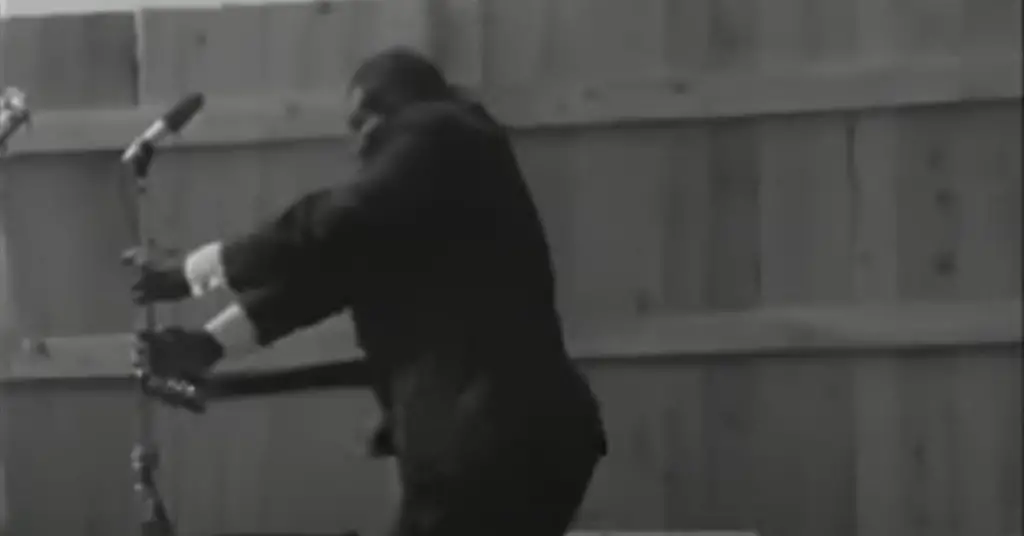The Earth Shook, the Blues Roared: How Howlin’ Wolf Changed the Way I Heard Everything
I thought I understood the blues—until I heard Howlin’ Wolf. The first time that voice came howling through my speakers, I nearly dropped the record sleeve. It wasn’t just deep—it was primordial. Like gravel soaked in moonshine, thunder wrapped in velvet, or some ancient blues god just woke up mad.
“Smokestack Lightning” was the song. One note from his growl, and I was hooked forever. He wasn’t just singing the blues. He was summoning it.
From the Delta to Chicago: The Making of a Blues Titan
Born Chester Arthur Burnett in Mississippi in 1910, Howlin’ Wolf grew up absorbing everything around him—field hollers, gospel, Delta slide guitar. His mentor? None other than Charley Patton, the father of Delta blues. That’s the level we’re talking about.
Wolf didn’t even start recording until he was over 40—but when he did, the world changed. He moved to Chicago in the early ’50s, signed with Chess Records, and kicked off a string of explosive, earthshaking recordings that reshaped electric blues and laid the foundation for rock and roll.
Muddy Waters was cool. B.B. King was smooth. But Howlin’ Wolf was a force of nature.
That Voice: Fire, Fury, and 100% Real
Howlin’ Wolf’s voice is its own instrument. Rough, animalistic, full of growl and grit, it’s instantly recognizable and totally unforgettable. He didn’t try to be pretty—he tried to be honest. And man, was he ever.
He could snarl, shout, moan, and whisper—all in one phrase. When he sang, “I asked for water, and she gave me gasoline,” it wasn’t a metaphor. You could feel the burn.
He stood 6’3”, 300 pounds, and commanded the stage like a storm cloud rolling in. But underneath that intensity was a deep soul. The man knew pain, joy, love, and rage—and he poured it into every word.
The Sound: Grit, Groove, and Pure Blues Muscle
Wolf’s music hits like a freight train. His band—often featuring Hubert Sumlin on guitar—was tight, funky, and full of electric tension. These weren’t blues ballads. These were grooves that stalked and swaggered.
His recordings are raw but tight. No wasted notes. No gloss. Just deep-pocket rhythm, biting guitar, and Wolf’s voice cutting through like a razor.
And here’s the thing: every rock band you love stole something from him. The Rolling Stones, Cream, Zeppelin—they all drank from the Wolf’s cup.
Essential Albums and Tracks That Shook My Soul
If you’re new to Howlin’ Wolf, don’t worry. Here’s a quick roadmap that’ll change your life:
- 🔥 Moanin’ in the Moonlight (1959) – His first LP, packed with hits like “How Many More Years,” “Smokestack Lightning,” and “Evil.” It’s raw, spooky, and classic.
- 🎸 Howlin’ Wolf (The Rockin’ Chair Album) (1962) – Maybe the greatest blues album ever. “Wang Dang Doodle,” “Spoonful,” “Little Red Rooster”—they’re all here.
- 💥 The London Howlin’ Wolf Sessions (1971) – Wolf meets Clapton, Charlie Watts, and Steve Winwood. It’s rough, legendary, and full of transatlantic electricity.
- 🎤 Live and Cookin’ at Alice’s Revisited (1972) – Late in his career, but still full of fire. A master at work.
And if you want to get to the essence of his vibe? Put on “Back Door Man” with the lights low. It’s not just blues—it’s a statement.
Seeing the Wolf: What I Wish I Could Have Witnessed
I never got to see Howlin’ Wolf live—he passed in 1976, before I even really knew what blues was. But friends who did said it was like watching a preacher, a wildman, and a blues giant all wrapped into one. He’d growl, crawl across the stage, throw back his head and howl into the rafters.
But what stuck with people most was the power. You didn’t just hear him—you felt him. Like he was putting every ounce of blood and breath into the blues.
Why Howlin’ Wolf Still Matters So Damn Much
In a world that keeps sanding down the edges, Howlin’ Wolf reminds us what the blues really is. It’s not always pretty. It’s not always smooth. Sometimes, it’s rough, loud, angry, and true.
He’s the missing link between Delta blues and rock ‘n’ roll, the voice behind songs that shaped a generation, and the soul of Chicago’s most muscular sound.
You don’t listen to Howlin’ Wolf to relax. You listen to him to wake up. To get shaken. To remember that the blues was never about playing it safe—it was about playing it real.

Where to Start If You’re New
Here’s your Howlin’ Wolf starter kit. No filler, just the fire:
- 🎧 Moanin’ in the Moonlight – His raw, game-changing debut.
- 💿 Howlin’ Wolf (The Rockin’ Chair Album) – An all-time great.
- 🎸 The London Howlin’ Wolf Sessions – Blues meets British rock.
- 📺 YouTube: Search “Howlin’ Wolf live 1966” or “Wolf and Hubert Sumlin” and watch a master do what only he could do.
More at allmusic.com/artist/howlin-wolf
Howlin’ Wolf didn’t need polish. He had power. He had pain. And he had a voice that could shake the walls of heaven. If you’ve never let the Wolf howl through your speakers, now’s the time. Just don’t be surprised if he never leaves.
Thank You
We appreciate your time and dedication to reading our article. For more of the finest blues guitar music, make sure to follow our Facebook page, “I Love Blues Guitar”. We share exceptional selections every day. Thank you once again for your continued support and readership.


Facebook Comments